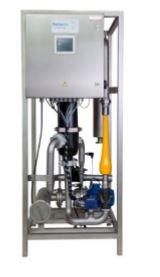Project Info
COMPLETE
 Project Title
Project Title
 Project Title
Project Title
Industrial Vortex Generator – Cooling Tower (IVG-CT)
Project Number ET15SCE1080 Organization SCE End-use Process Loads Sector Industrial Project Year(s) 2015 - 2016Description
The goal of this three-month field assessment was to determine the efficacy of a physical water treatment (PWT) technology for cooling towers to determine energy, water, and chemical savings potential at a Southern California Edison (SCE) customer site.
Project Report Document
Loading PDF Preview...
